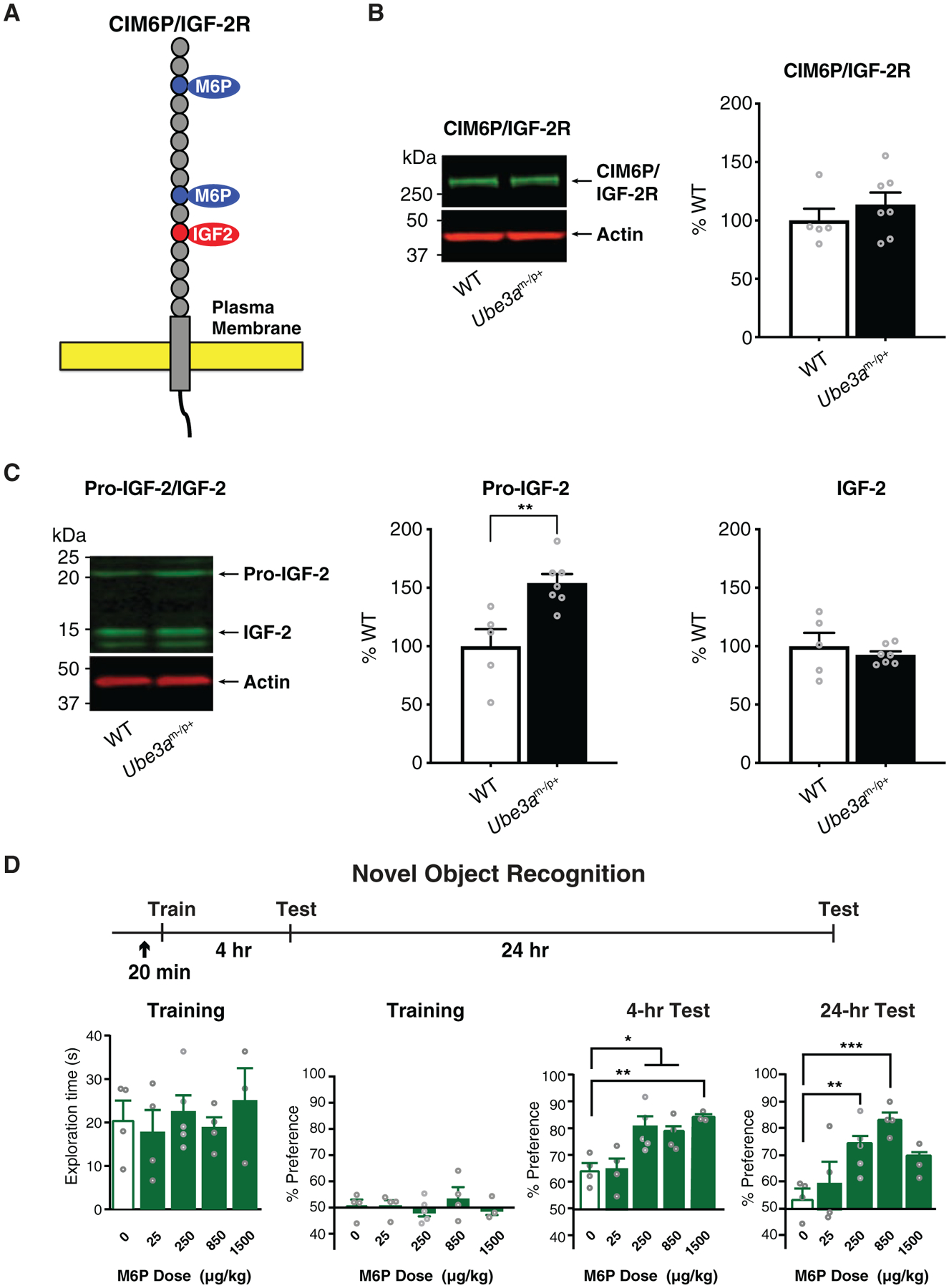Figure 1.

Hippocampal levels of CIM6P/IGF-2 receptor and mature IGF-2 are unaltered, while pro-IGF-2 is increased in Ube3am−/p+ mice; dose–response of M6P injection on object recognition memory in WT mice. (A) Schematic diagram of the cation-independent M6P/IGF-2 receptor (CIM6P/IGF-2R) with the binding sites for IGF-2 and M6P. (B) Western blot analysis comparing dorsal hippocampus levels of CIM6P/IGF-2R in WT and Ube3am−/p+ mice; n = 5–7 per group. (C) Western blot analysis comparing dorsal hippocampus pro-IGF-2 and mature IGF-2 levels in WT and Ube3am−/p+ mice; n = 5–7 per group. (D) Dose response curve of an s.c. injection of M6P in WT mice. Experimental schedule is shown above graphs. In all experiments, mice received a s.c. injection of either vehicle or M6P (↑) 20 min before nOR training and were tested for memory retention 4 hr and 24 hr later. Graphs from left to right show exploration time of both objects expressed in seconds during training, percent preference of objects during training, and percent preference for a novel object relative to a familiar object during nOR testing at 4 hr and 24 hr after training; n = 3–5 per group. Data are expressed as means ± s.e.m. Unpaired t-tests or two-way analysis of variance (ANOVA) followed by Tukey’s post-hoc tests were used. *P < 0.05, **P < 0.01.
